Unbreakable Gear for Breaking News
SEATTLE—When a news photographer jumps out of a vehicle to cover a breaking news story, the last thing they need is a science project when putting together the video gear. Makers of camera support, portable lighting and battery packs go to great lengths to make their gear on the go quick and easy to deploy.
CAMERA SUPPORT
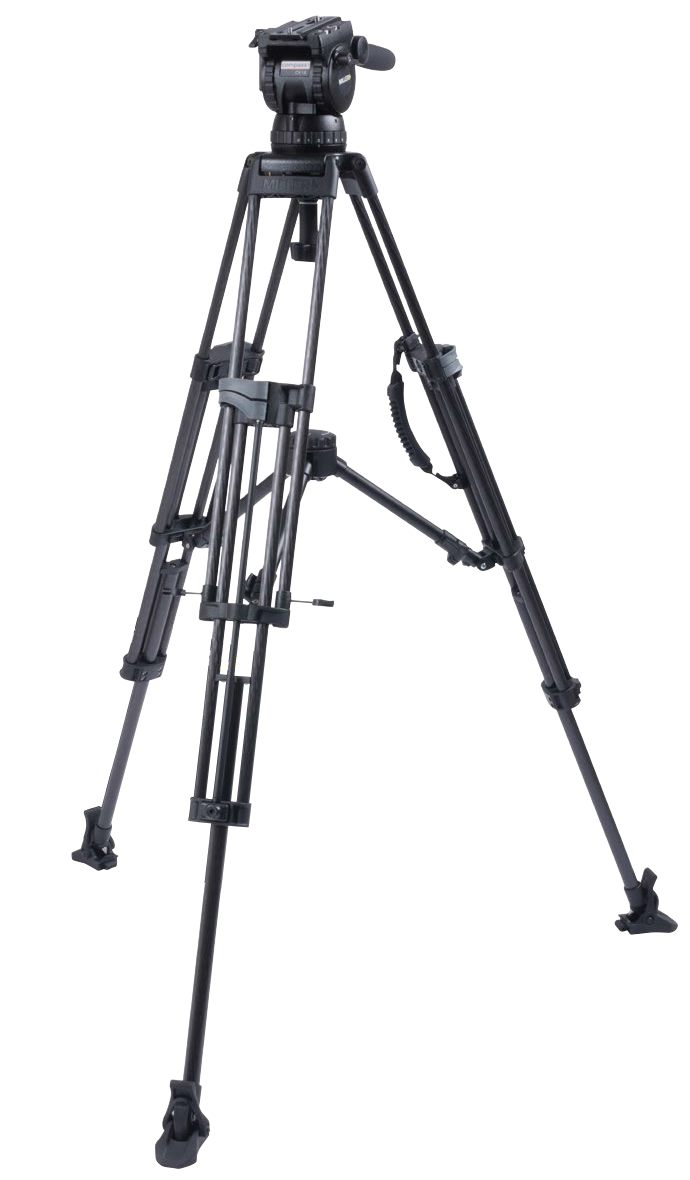
Tripods have always been important for steadying the camera shot, but they’re even more important now to support the camera while the video journalist also reports the liveshot.
Miller Camera Support addressed the need for one-handed tripod deployment with its Sprinter tripod. “We have a dual, independent locking system with two levers that are side-by-side at the top,” said Miller Regional Manager Gus Harilaou. “That allows opening the tripod with one flip of the lever, and it deploys both the bottom and the top stages of the tripod. The tripod is opened in a few seconds.”
The Sprinter tripod is paired with Miller’s Compass X18 fluid head. “This is basically for any newsgathering where guys have little cameras, whether that would be handheld or full-blown shoulder-mount cameras,” Harilaou said. “CX18 has a capacity range to take any payload from zero to 35 pounds.”
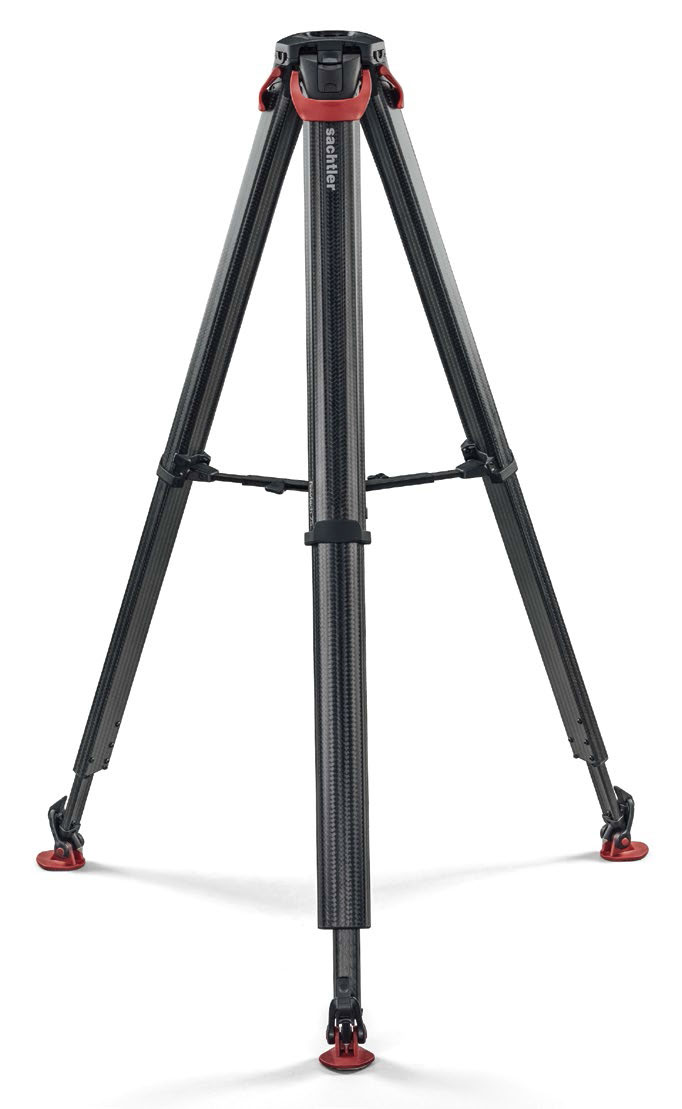
Vitec brands Vinten and Sachtler co-developed the flowtech tripod family designed for fast moving news coverage. “What makes it so appealing to the news folks is the speed of deployment, which can determine whether you get a shot or not on a breaking news story,” said Tobias Keuthen, director of global product marketing management.
Keuthen noted that the flowtech’s unique clamping mechanism was placed on top of the tripod where the head fits, helping news photogs deploy more quickly. “You don’t have to bend over; you can open the braking clamps for all three legs from the top of the tripod and extend the legs easily,” he said. “You can close the clamps also without bending over, and you can adjust the legs for working on stairs or uneven ground.” The company just added a 100mm bowl version of the flowtech for larger payloads.
Several years ago, Libec launched its Hands Free Monopod (HFMP) designed for free stand operation, according to Jose Larios, manager of sales and marketing for the company. “Our monopod is different by the fact that the base is wide, and it allows the user to put it into a vertical position just by simply stepping on the base,” he said.
The HFMP can stand on its own on the wide base to allow a oneman- band photojournalist to securely position the monopod then step in front of the camera for a liveshot standup. Libec conducted some focus groups to determine what users wanted from a monopod, Larios said. “And when we found out what were the best features, applications and benefits that are going to our product, we put that into place when designing the Hands Free Monopod.” This included placing a fluid head on the top.
Shotoku found that stringers and news departments at smaller stations were turning to lower cost camcorders and even DSLRs to capture video, which opened its market to lower cost, simpler tripod systems. “Our tripods for these customers vary from the SD 20 with really basic level features like fixed drag and counterbalance,” said Graham Ramsey sales director, manual and robotic products for Shotoku.
Two slightly higher level versions—SD 80 and SD 150—can handle higher payloads of 8 kilos and 15 kilos, respectively, and feature a step counterbalance system, and step drag system. To keep things simple for working faster, “with the SD 20 you can leave the balance and drag settings exactly where they are,” Ramsey added. “You don’t have to change anything, take off tensions or lower drag settings, or anything like that.”
LIGHTING
Lighting equipment has come a long way since the introduction of LED fixtures, with time-saving features like dimming without color shifts and the ability to dial in a desired color temperature.
Video journalists are not necessarily lighting experts, according to Kevin Crawford, vice president of engineering at Frezzi in Hawthorne, N.J. “A lot of these people don’t really know about how to light up a scene, so our Skylight product provides a wide, flat, optical field,” he said. “This thing is brain-dead simple to use, and throws a lot of light.”
For working fast in the field, the Skylight can be powered by a broadcast brick battery pack or off AC. It provides high CRI single source 5600K daylight light without pixelation or color fringing.
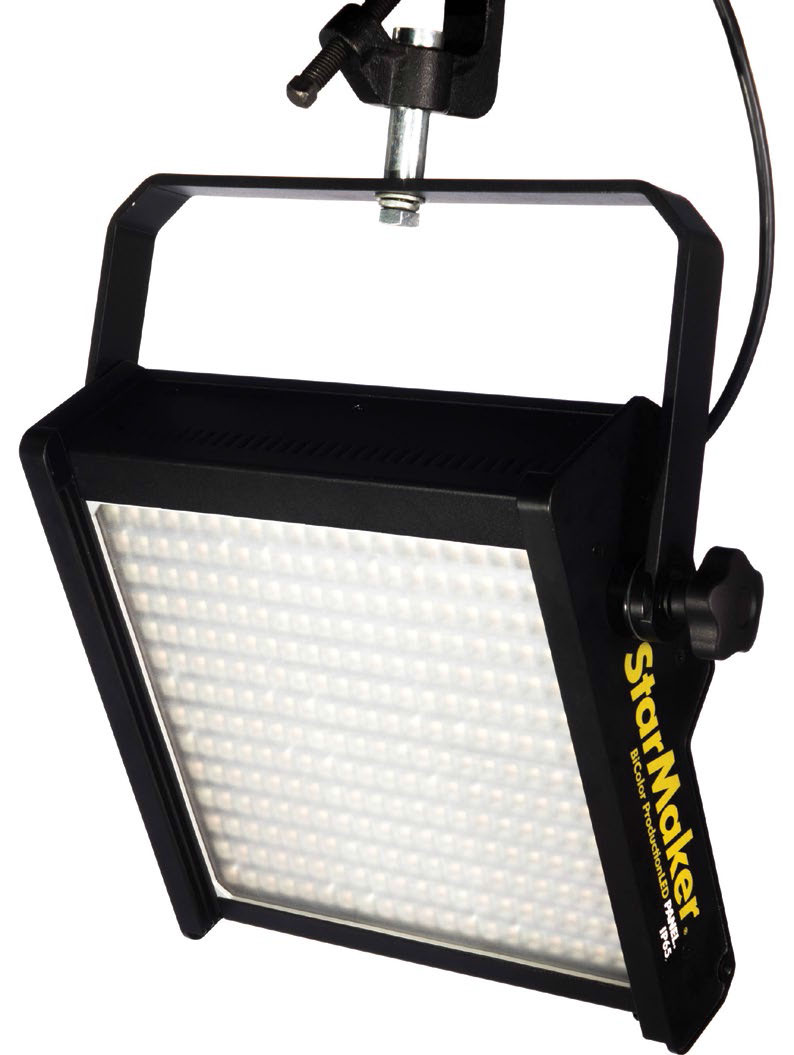
Fluotec’s StarMaker color-tunable panel fixture has found a home in ENG vans for a number of years, and the company’s upgrade to the StarMaker HP model will make it even more desirable to news crews said Fluotec Chief Marketing Officer Jose Maria Noriega.
“The StarMaker HP now has the same technology as our Cine Light, so it has a much better CRI of 97.7, and it now delivers an output of 37 percent more light than the previous version,” he said. “Incorporating our NEBULA Diffusion Chamber Technology makes a 70 degree throw and softer light than when it’s used without this attachment. And this allows you to use barn doors. Although most panel manufacturers put the barn doors on the light, but they throw a multi-shadow on the background. Our diffusor attachment behaves as a single source point of light, which is very controllable by barn doors.”
With the built-in battery attachment, there’s no need to run cables.
Litepanel’s most popular ENG light is its Astra Bi-Color, according to Byron Brown, program product manager for parent company Vitec Videocom. “It can be easily hand held or put on a stand, it can be installed with a battery adapter, you slip the battery on it and you’re ready to go.”
The color agility of the Astra Bi-Color is another feature that allows for working fast, Brown added. “What we find oftentimes is that guys out in the field will start off with the light dialed in to daylight, and then warm it up to taste,” he said. “The color temperature dial on the Astra also has color temperature readings, so if you know your favorite reading is 4500K, you just dial it to that number and you’re there.”
For situations where a photographer needs a longer throw of light, Litepanels also has the Astra Bi-Focus, with lenses to narrow and intensify the light.
Tama Berkeljon, managing director at Outsight in Australia, said its most popular light for ENG shooters is the bicolor Creamsource Micro. “It’s punchier, and you’ve got more options for diffusing it or softening it back,” he said. “It’s extremely flexible and can be deployed in seconds with a battery attached.”
Accessories include diffusion and lensing, Berkeljon added. “Dropping in lenses changes the beam angle from 30 to 60 to 100 degrees,” he said. “Unlike most bi-color fixtures, the Micro maintains constant power output across the whole CCT range, so users always get the unit’s full potential. There is no reason to have to choose between a bi-color or daylight system. And because of the Micro’s wide 10-32V operating voltage, users can power the fixture from a single 90WH battery, or directly from a car.”
Zylight spotlights its F8 200 LED Fresnel as its most popular with ENG camera crews for its durability and outdoor IP protection. Charlie Collias, director of fixture sales for the Cypress, Calif.-based company.
It’s also very quick to deploy when breaking news is happening. “Its 5 inches thick and packs into a milk crate, pelican case or in padded travel cases we sell,” Collias said. “In other words, the F8 200 is easy to find space for in a van to bring it along, and doesn’t take up much room. The camera person can pull it right out of the bag, place it on a stand and throw a camera battery on the rear and it’s good to go.”
BB&S Lighting recommends a pair of fixtures for speedy ENG work, one for closer work and a second when some throw is needed. “Our Reflect 1-foot or 2-foot wedge-shaped LED fixtures feature an internal reflector system that spreads a 160 degree beam angle,” said Toby Sali, partner in BB&S. “They can be used singly or ganged up in banks. They give you instant and soft lighting.”
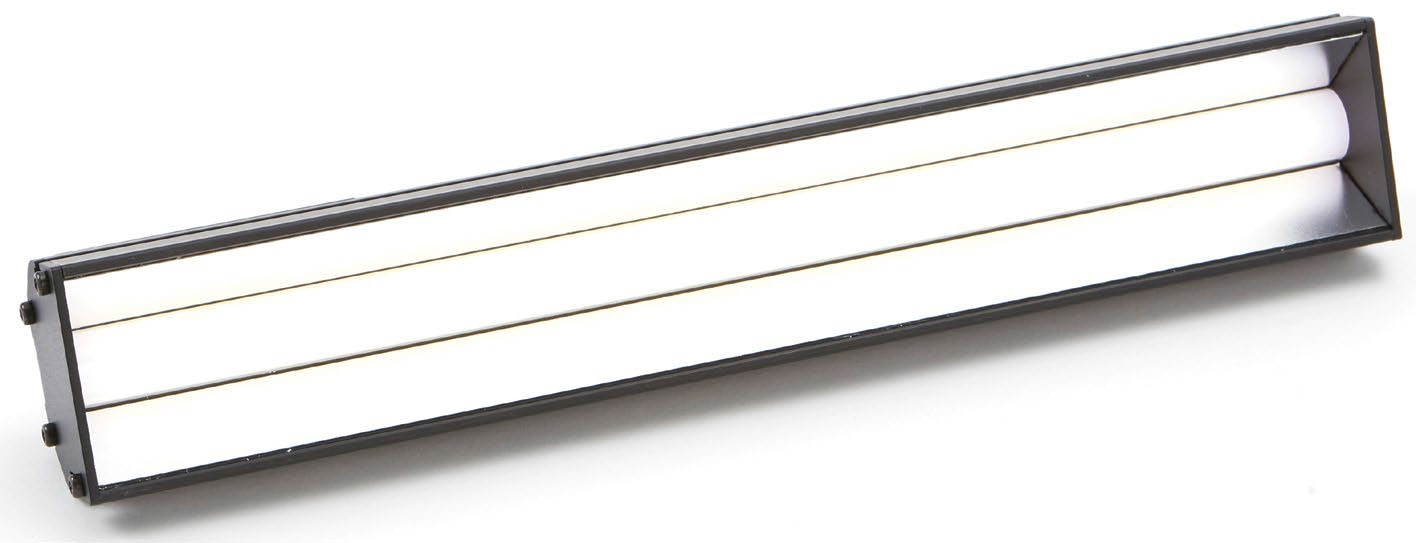
Where the subject is some distance away, he points to their Compact Beam Light. “the front is 6 inches, and it’s 5 inches across. It is a 40W draw, like the other one, and it is a 7 degree, 11 degree, 14 degree or 17 degree beam light. So it isn’t a hard light. It doesn’t give you a ridge like a LEKO ellipsoidal profile light. It’s got 15 percent roll-off on the edges.”
During the fluorescent lighting era, Kino Flo sold a lot of its Diva lighting fixtures to news shooters who liked the soft modeling light it produced. “As LEDs took over, we developed a fixture called the Diva Light 21, which is the latest version of our LED Diva Light,” said Scott Stueckle, who handles sales and public relations for the Burbank, Calif.-based company. “It’s lighter weight from any other Diva Light we’ve had. It still has all the functionality. You can pull it out of the case and you can run full daylight and tungsten.”
One high-end feature of the latest firmware for the Diva 21 is the ability to color match the light to a particular camera. “Cameras have different sensors, different spectral curves that they use to see light—they don’t all see light the same way,” Stueckle said. “We’ve pulled out all those spectral sensitivity curves of those cameras, and we’ve downloaded them onto our software profiles. You can also go in and pull up a Panavision or Panasonic or Sony or Canon camera, and lock those color profiles in.” If a news shooter has to change cameras, it’s easy to change the Kino Flo fixture’s color properties to match, Stueckle added.
POWER SUPPLIES
A news shooter can have everything else going fine, and when the power runs out the shoot rudely and quickly comes to an end. Battery makers have gone to great lengths to provide high-capacity battery packs that are also feature rich.
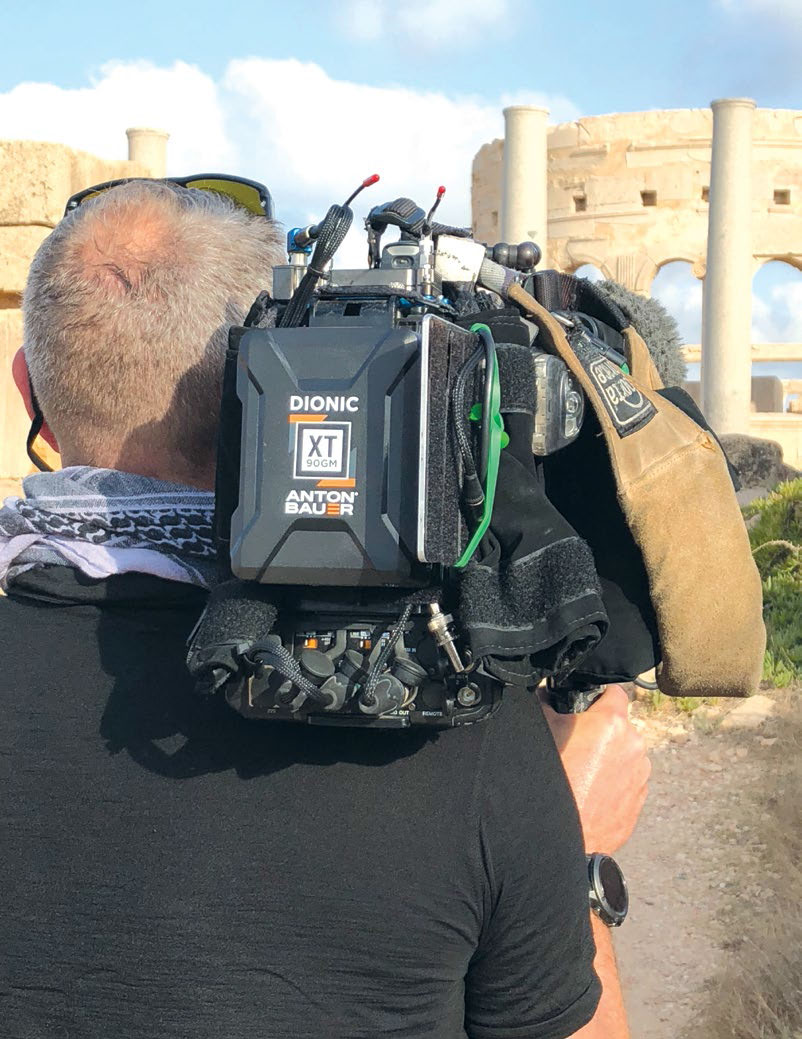
Anton/Bauer unveiled its Dionic XT battery family last year and it’s found a quick market for news photographers, according to Chris Gaughan, product manager for Vitec Videocom’s Anton/ Bauer brand, who said Dionic battery packs are designed to live on the back of a camcorder “and you’re ready to go at a moment’s notice. You pick up your camera, push a button, and it’s running.”
Another feature that assures the shooter isn’t chasing a news story with a nearly empty battery pack is a fuel gauge display. “When the battery’s not under load it tells you how much battery is left, gives you a percentage,” Gaughan said. “When the camera’s running, it gives you the run time you have left, based on the load. And by touching the back of the battery you can cycle through and see what kind of current you’re drawing and temperature of the cell pack.”
Jet-hopping news crews were the focus of IDX System Technology when it designed its Dual C 98 battery packs. “Because it’s at 98W—under 100W—you could carry 15, 20, 25 on the plane,” said Jun lshizekai, associate manager of marketing & regional west sales. “It features two D-taps and one for USB, so it has enough accessory ports to fill all of a camera guy’s needs.”
Dual Cs have a five LED fuel gauge on the side, and because the individual LED is either fully lit, blinking or dark, it actually indicates battery power remaining in 10 percent increments, lshizekai added. “There’s also an LED on the Vmount side, and if you’re in total dark and it’s hard to see to change batteries, you can turn this LED on. It stays on for 30 seconds to let you maneuver around when remounting a battery pack on the camera.”
PAG’s PAGlink batteries provide the ability to gang several battery packs together on the back of a camcorder, creating a number of advantages, according to John O’Keefe, marketing consultant for PAG. “Unlike the conventional Gold Mount batteries, a single battery with a single capacity, PAG makes 90Wh and 150Wh battery packs that can be linked together,” he said. “For most guys who are shooting news, they would probably want just two, and that would let them shoot for eight hours without having to change batteries.”
PAG’s Power Hub sandwiches between two battery packs, and will let the shooter power a light, wireless microphone, small monitor and similar accessories off the camera when both batteries are linked. “The battery closest to the camera acts as your hot swap and the camera drains from the rear battery,” O’Keefe added. “That power hub is in the middle, and you can remove the rear battery without interrupting power to the camera and accessories.”
Frezzi’s FLD 100 battery packs are 100 Wh capacity, the company’s largest legally transportable battery. “It’s got a push to test fuel gauge, so it doesn’t drain the battery when it’s not being used,” said Crawford.
“It’s weatherproof, fully sealed. It can be charged with our existing desktop chargers; and it has a small port that’s used with a portable power supply to charge it, like a small desktop charger, a single channel. So if you have a little go bag and you don’t want to bring a desktop charger, like a four position station, you could use this little power supply to charge it that way.”
Get the TV Tech Newsletter
The professional video industry's #1 source for news, trends and product and tech information. Sign up below.
